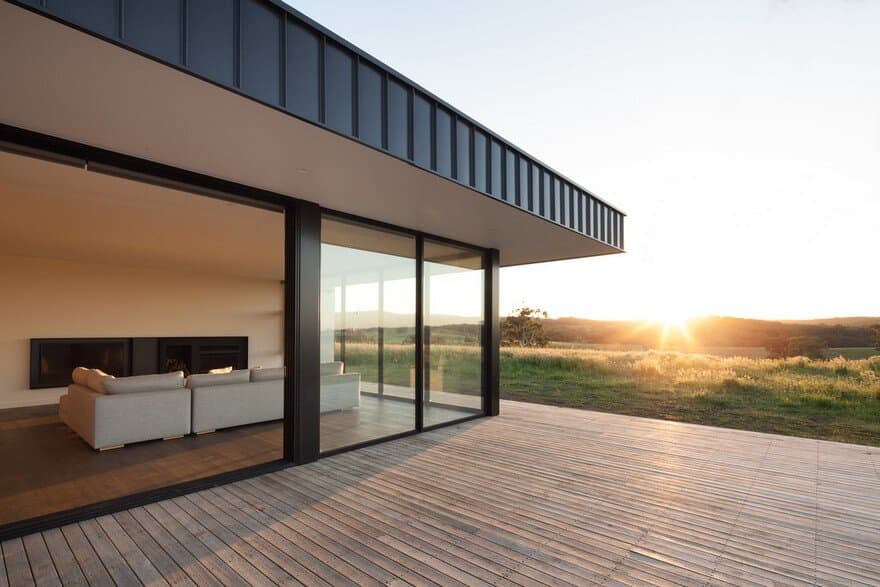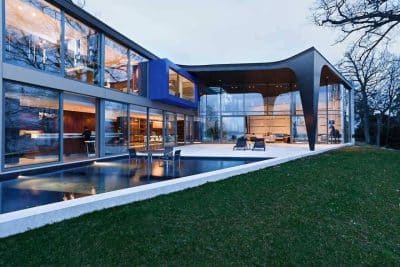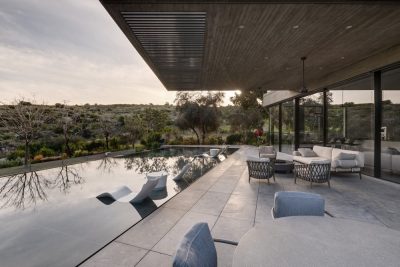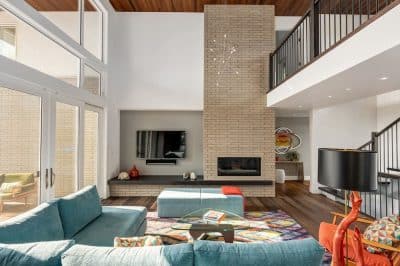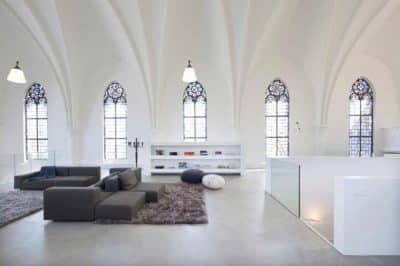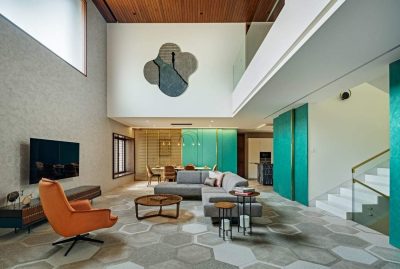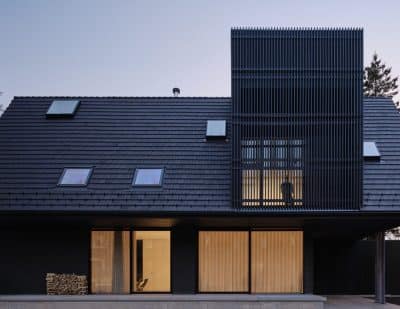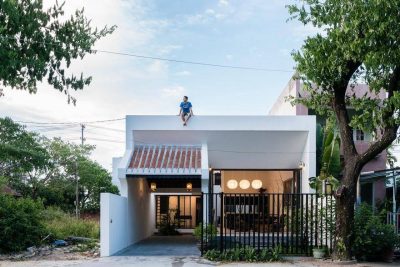
Owning a remote cabin invites you to get away from your obligations and work, disconnect from your mobile device, spend time outdoors and connect with your inner self. It also offers an opportunity to engage with others. While making smores or sipping red wine around the fire with your friends and family, you’re participating in face-to-face social interactions that can help your health and well-being.
But as their name implies, remote cabins are, well, remote. That picturesque and isolated setting that draws us to a place also presents several building-related challenges. This explains why many are turning to prefab cabins as a low-impact alternative for remote and ecologically sensitive areas.
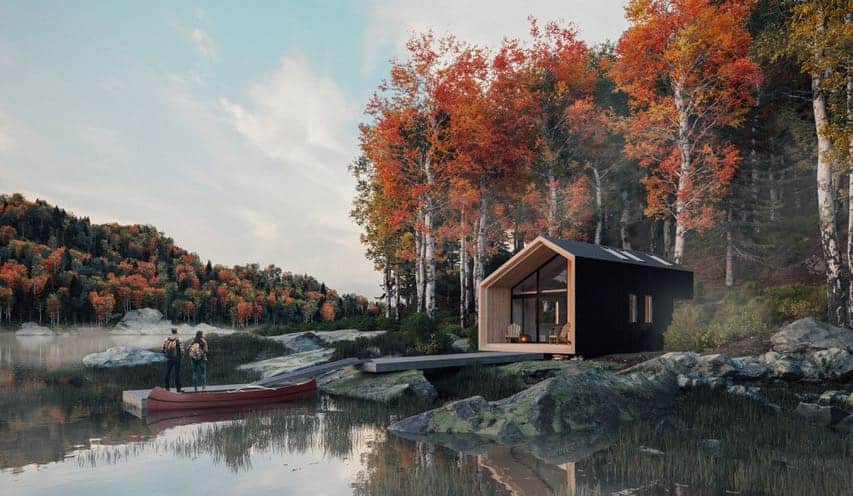
What Are Prefab Cabins?
Prefab buildings are made using a technique known as modular construction. It involves creating separate sections (or modules) away from the site of the structure. These modules are then delivered to the destination, unloaded, craned into position, and assembled by a crew of expert assemblers.
As a result, prefab buildings are also referred to as modular. They should not, though, be confused with “kit homes”. With “kit homes” individual components are pre-cut to precise measurements and numbered by building manuals, much like how storage sheds are put together.
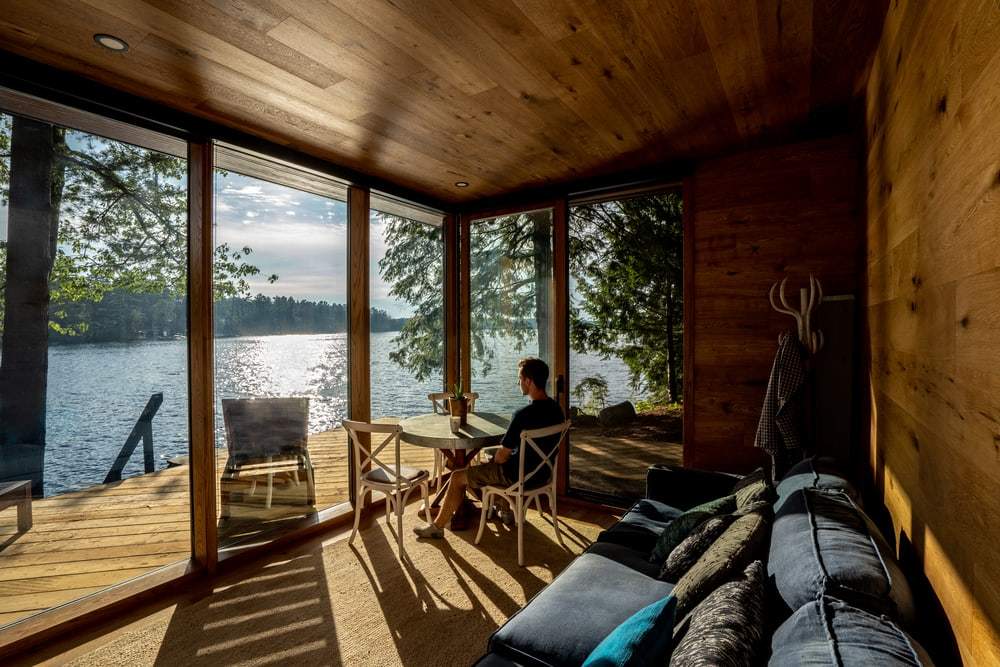
Advantages of Prefab Cabins
There are many reasons why people are choosing manufactured cabins over traditionally constructed ones. Let’s take a look at some of the main ones.
Cost-Effective
For some people, the cost is one of the main factors to take into account when building a house. The design, the materials used, the size of the rooms, the quality of the plumbing and electrical, the level of craftsmanship, warranties, etc., all have an impact on the cost of building your dream cabin.
The result of building in a climate- and quality-controlled environment as opposed to at the installation site is a more productive process and a higher quality product. Furthermore, it prevents a mess from being made on your site by numerous substitute workers, bad weather, and other delays.
Fast to Build
Construction delays are common in site-built construction for a variety of reasons. Cost overruns and, more crucially, frustration can emerge from projects that take longer to complete than expected.
Even under ideal conditions, it can take up to a year to build a cabin on-site. On the other hand, the construction of a prefab one usually takes a few months, and it is then ready to be delivered to a construction site.
Durable
Prefab cabins meet the highest quality and safety standards established by governing bodies. This means they can withstand cold, moisture and strong winds. They are also designed to withstand transportation requirements. As a result, they frequently outlast more conventional building materials. Prefab cottages, for instance, frequently withstand torrential downpours and storms.
The fact that modular homes are built without being delayed by snow or rain also gives the process better control at each stage.
Greater Design Flexibility
Another benefit you enjoy with a manufactured hut is the control over the layout and design. Whether you want a traditional or a contemporary look, the choice is yours. The number of bedrooms, bathrooms, closets and other details are discussed in advance and tailored to your desires, needs, aspirations and financial constraints. This also helps eliminate the potential for unforeseen manufacturing costs along the way. You’re guided through the entire process by your manufacturer, so you’re fully aware of what you’re getting even before anything is built.
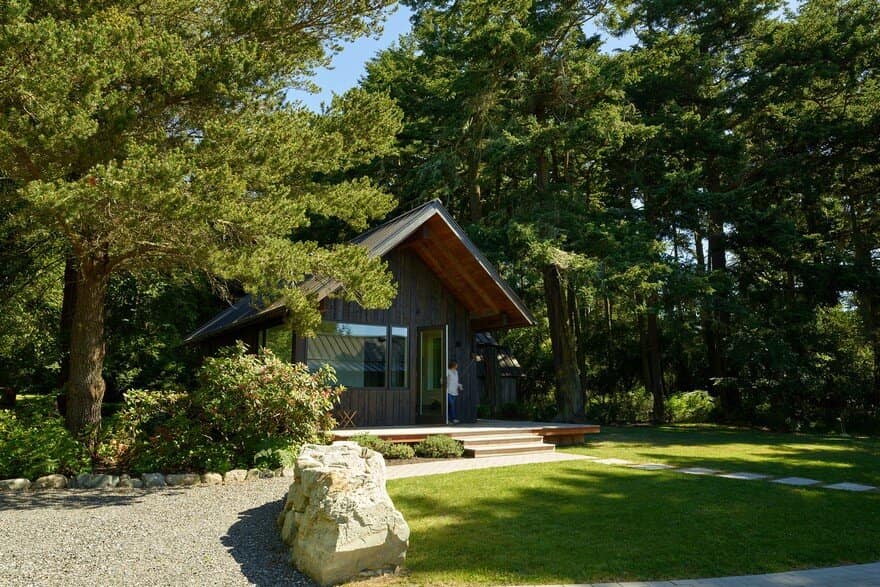
How to Choose?
Modern in design, sustainable and suited for remote sites, manufactured cabins are becoming a popular choice among those looking for an alternative dwelling. Naturally, they have been drawing attention and questions about how to get one for yourself.
Nowadays, you can find prefab designs in a wide range of sizes and shapes, ranging from tiny vacation pods to three-bedroom houses with all the bells and whistles. Most of them are constructed with sturdy, long-lasting materials like steel frames, recycled plastic panels, and cutting-edge thermal insulation methods to make them as energy-efficient as possible. Some come with stylish exterior accents that make them resemble classic log cottages or cutting-edge wooden buildings. An open floor plan is also a common feature of prefab homes.
Although making sure your prefab house fits your budget is surely a priority, you should stay away from very cheap offers. When searching for a good deal, make sure it’s one made from quality materials. Other elements to consider include:
- The type of roof has a significant impact on the cabin’s ability to withstand various weather conditions and receive natural light. A variety of material choices are available, allowing for various looks and sensations, ranging from conventional wood siding to more contemporary composite materials.
- According to individual preferences, interior features can also be changed. For example, some cabins may have a kitchenette or loft area, while others might have multiple bedrooms or an office.
- To increase durability and aesthetic appeal, interior finishes such as panelling or drywall can also be chosen.
- Additional customization is also possible with HVAC systems for year-round heating and cooling and fireplace options like gas or electric logs. Compared to permanent homes, prefab kitchens are typically smaller, but they still provide a lot of storage options and countertop materials like quartz or marble for an elegant feel.
- Showers, tubs, vanities, and toilets that abide by regional building codes are available in a variety of designs to accommodate different tastes while offering comfort and convenience.
Thanks to the variety of features available today, designing a prefab cabin that satisfies all of your needs and preferences is possible. To help you build the hut of your dreams, make sure you choose a reputable company. Ideally, the company should be accredited by the International Log Builders’ Association or the National Association of Home Builders and should use quality supplies and skilled professionals. The company should also provide great customer service. You can find out more about the company you’re considering by asking around and reading online reviews.
